In addition to traditional in-person lessons at a music school, you can also learn piano online. But is eLearning as effective as traditional piano lessons?
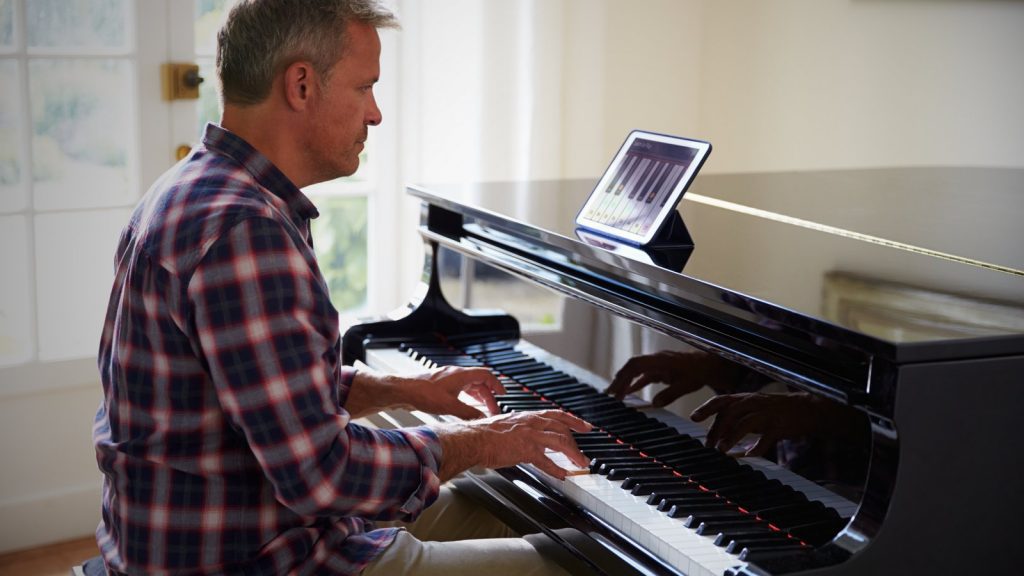
In addition to traditional in-person lessons at a music school, you can also learn piano online. But is eLearning as effective as traditional piano lessons?
Of course, you just want to sit down at your piano, digital piano, or keyboard and start playing. If you’re a beginner with this intuitive approach, you’re on the right track—after all, music is all about emotion. But if you prefer a more structured approach and are considering piano lessons, that’s a good option too. Often a mixture of both methods works best.
There is a wealth of information available online about learning to play the piano. On YouTube alone, countless video tutorials promise impressive results and claim to be easy, fun, and fast. Every online teacher seems to have the perfect method. But what should you make of this? What is the right way to learn, and how much time does it really take to learn piano online? Here are our tips.
The internet isn’t just for beginners. If you already know how to play but want to hone your skills, you’ll find plenty of inspiring material online. Complete beginners are well-advised to start with a trial lesson, which many music schools offer both in-person and online.
The best way to find the right learning method is to try it for yourself. While traditional lessons at a music school or with a private teacher are the classic path, that doesn’t mean they’re the only option—or even necessarily the best one for you. However, starting with some guidance can be highly beneficial.
Do you need to read sheet music to learn the piano?
There’s a common misconception that you have to read sheet music to play the piano—but that’s not true! Countless talented musicians play without reading music. This approach, often called ‘playing by heart,’ goes beyond memory; it also means ‘playing from the heart.’
If you feel drawn to simply sit down and play by ear, go for it! This path can be just as rewarding as traditional lessons, and the great thing is that you don’t have to choose one over the other.
You don’t need any special skills to start learning the piano, but a bit of basic knowledge can certainly help. There’s a wealth of information available online—here are some useful links to guide you in your first steps at the keys.
Piano Keyboard Explained For Beginners (Google Translate)
The 5 Biggest Mistakes When Learning How To Play Piano (Google Translate)
Surprising as it may seem, you can familiarize yourself with the piano keys online by visiting www.onlinepianist.com, where a virtual keyboard allows you to play using either your mouse or computer keyboard.
The outstanding feature of Online Pianist is its extensive collection of piano song tutorials. These tutorials provide a visual guide to the notes through an animated bar graph (Piano Roll), allowing you to see how music unfolds on the piano in real time. A few demo songs are free to access, and creating a user account unlocks more songs and the option to create personalized song lists.
Online Pianist is an English-language site designed for ease of use. Its virtual keyboard is mapped to the QWERTY computer keyboard layout.
It’s best if you learn to play your first few notes right away. For an even more hands-on experience, you can learn your first notes on a tablet or smartphone by downloading the Piano Tutorial app for iOS or Android.
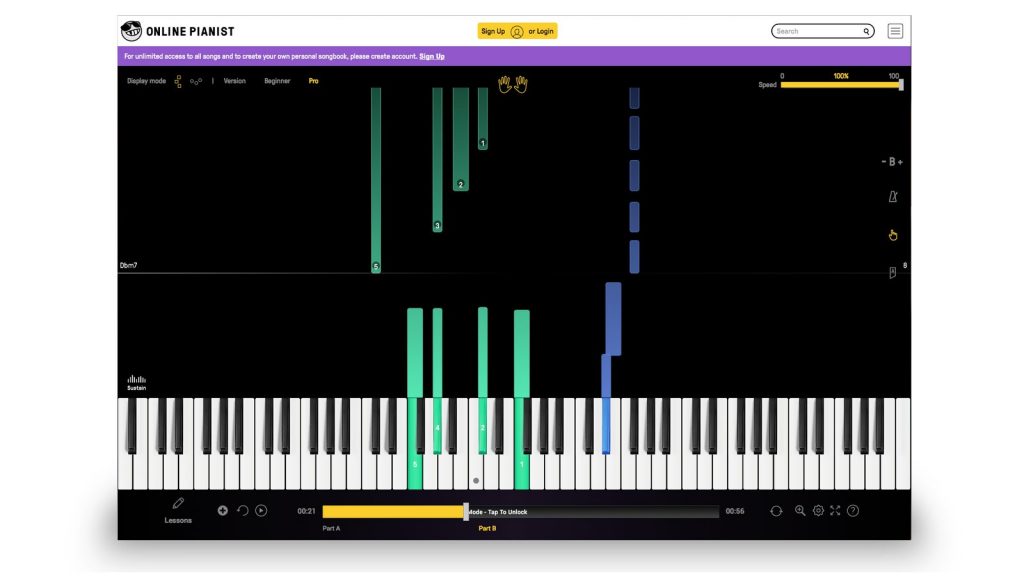
While learning the basics online is a great start, you’ll eventually need a real piano to put theory into practice. This doesn’t mean that you need to buy an acoustic piano right away. Many quality digital pianos for beginners are available for under $500. If you’re looking to try out piano playing without a big investment, the Roland Go:Piano could be an ideal choice. Although it doesn’t have a fully weighted keyboard, it’s more than adequate for beginners.
The Go:Piano is affordable and offers quality sounds along with convenient features for online learning. A Bluetooth audio connection, for instance, allows you to stream lessons and video tutorials directly through the Go:Piano’s internal speakers or headphone output, making it easy to play along.
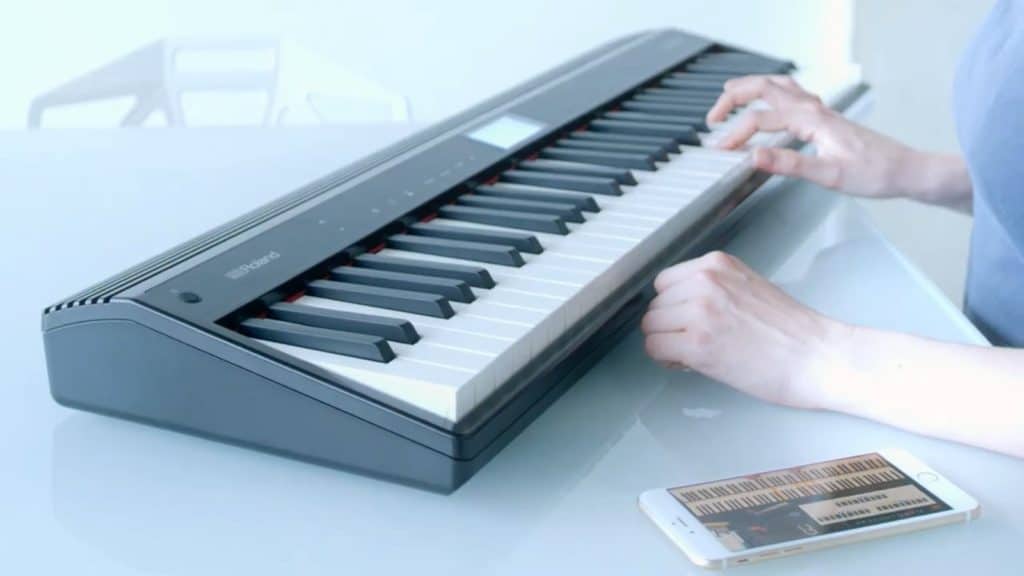
Manufacturers such as Yamaha and Roland have developed dedicated apps to support learning on their digital pianos. Roland’s Piano Partner app and Yamaha’s Smart Pianist app are designed to work exclusively with their respective pianos, enhancing the instruments’ built-in features and adding new ones. These apps offer a range of learning tools, including etudes, sonatas with automatic notation, and accompaniments to play along with, as well as beginner exercises for learning sheet music.
In addition to learning features, these apps make it easy to control digital piano functions, like editing sounds and effects, through a touchscreen—adding convenience and transparency to the experience. Best of all, these apps are offered free by the manufacturers.
There are also piano apps designed as learning platforms, such as Simply Piano, which can be both helpful and entertaining. However, whether these apps alone are sufficient for learning to play the piano is debatable. For more perspectives, check out discussions on Reddit such as ‘Shortcomings of Piano Apps’ to hear from others about their experiences.
Synthesia has gained widespread popularity online and could be seen as a universal language for learning piano—entirely without sheet music. Similar to the Piano Roll display in Online Pianist, Synthesia visually shows you when and how long to play each note on a virtual piano keyboard.
How does Synthesia help you learn?
Synthesia works as a sequencer, offering a visual and auditory approach to learning. You don’t need to know music notation, as this is not part of Synthesia’s instruction. One advantage is that you can adjust the speed to practice each piece slowly, note by note, and then increase the tempo as your skills improve.
Synthesia supports any MIDI file, though you can also purchase songs from the Synthesia Music Store, where pieces are rated by difficulty and cost between $1 and $3.
As a self-guided piano learning tool, Synthesia is straightforward and easy to navigate. Numerous demos on YouTube show how to play popular pieces using Synthesia’s interface. However, there are a few limitations to be aware of:
Synthesia is available for Windows, macOS, iOS, and Android. There’s also a Synthesia Video Creator app (Mac/PC) that allows you to create your own visualized songs as video tutorials for sharing.
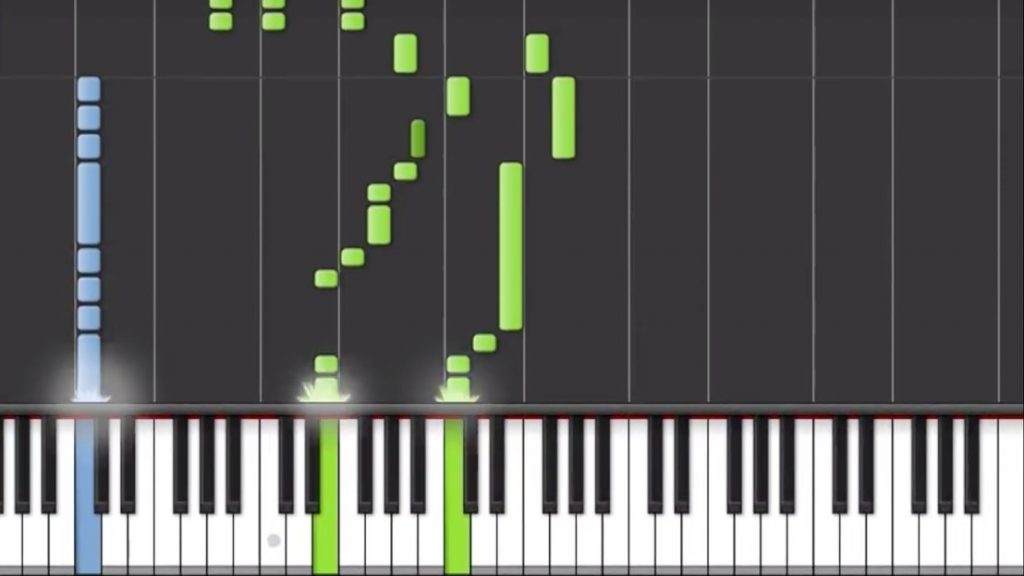
MuseScore is a free sheet music software available for both PC and Mac. In addition to the software, there is also a (paid) sheet music archive on the website. The highlight, however, is the free piano tutorials. These tutorials are presented in a visual player similar to the one used in Synthesia.
For more information, visit the MuseScore website.
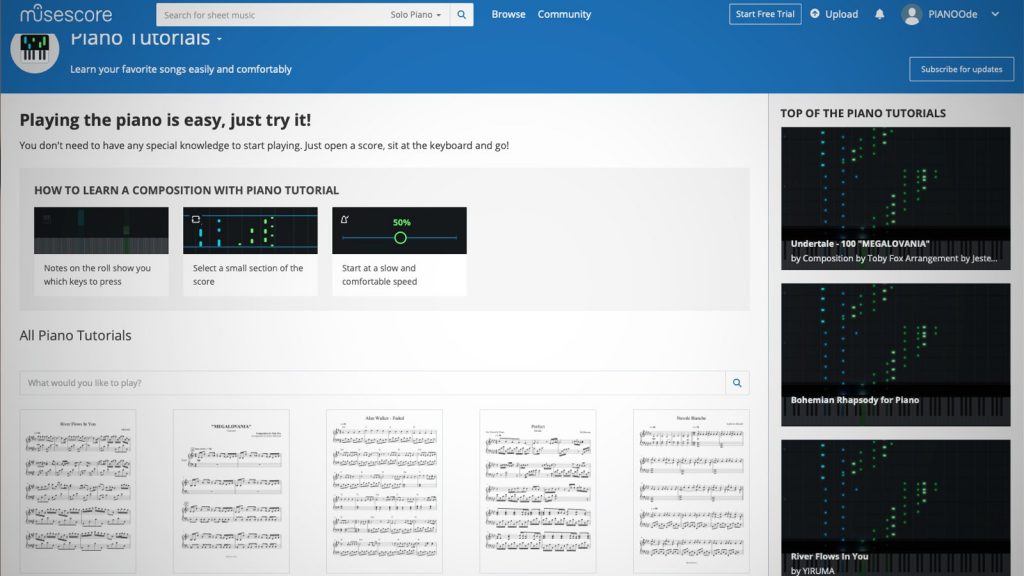
If you search for “how to play the piano” on YouTube, you’ll find tutorials by Thomas Forschbach of werdemusiker.de. In his videos, he demonstrates step-by-step how to play various pieces, including iconic classics like Amélie and River Flows in You.
Thomas Forschbach made waves with his “Learn to Play the Piano in 10 Minutes” tutorial, which was even featured in a TV report (Welt der Wunder).
Forschbach uses a clever trick in his online course. It’s probably the easiest way to intuitively play something that sounds good, even without any prior knowledge. And it doesn’t even take 10 minutes—it’s that simple:
You play the same chord (in this case, C major) with your right hand while the bass moves from C to A to F to G and back to the root note, C. Countless pop songs are based on this chord progression, so the wow effect is guaranteed. The video explains everything step by step. This is a great way to play your first notes on a piano keyboard and have fun at the same time.
If you thought learning to play the piano in 10 minutes was impressive, a beginner’s tutorial from the eLearning portal music2me.com (affiliate) does it in just 8 minutes! However, the shorter time isn’t the main attraction of this video, which packs in a lot of useful information. You’ll learn the location of the keys on the keyboard, the names of the notes you play, and even some basic music notation. Best of all, by the end, you’ll be able to play Ludwig van Beethoven’s world-famous Ode to Joy. The video is professionally produced and provides a great introduction to the learning platform of this online piano school.
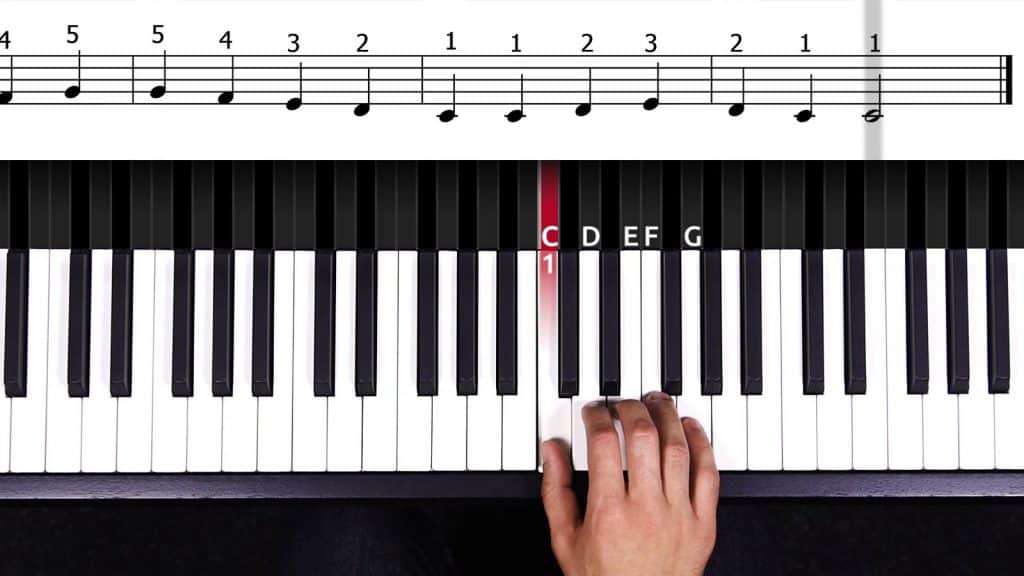
Piano virtuoso Joja Wendt offers one of the most prominent online programs available. Since 2016, Joja’s Piano Academy has provided students with unique features. No prior knowledge of music is required, and the content is presented in an engaging video format. An outstanding feature is the opportunity to participate in virtual jam sessions with renowned musicians.
You can either play the piano part on your own or be accompanied in the virtual rehearsal room by a bassist, drummer, or even the Babelsberg Film Orchestra. The course costs about $33 per month, with free lessons available to try out the platform. For more information, visit the Joja’s Piano Academy website.
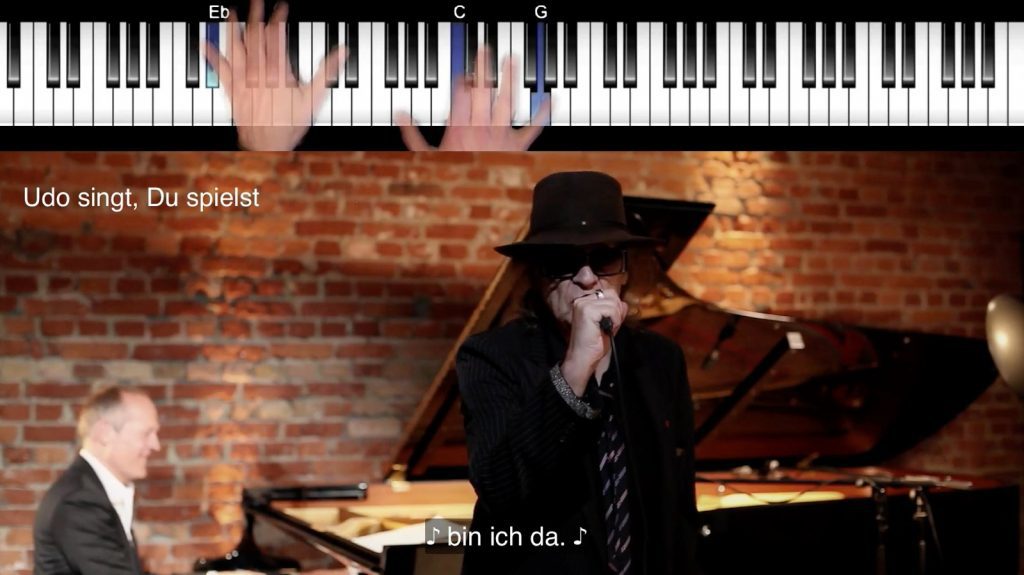
As an alternative to traditional piano lessons, eLearning portals open up a wide range of possibilities—from learning to play the piano for the first time to mastering well-known and challenging piano pieces for more advanced students.
PRO: You have the flexibility to decide when to start your next lesson and how long to work on it. Also, you can learn at your own pace and take piano lessons when it suits you. eLearning portals are typically more affordable than traditional lessons at a music school.
CON: Unlike in-person lessons, there is no direct feedback or guidance from a piano teacher. While most portals offer ways to ask questions, this cannot replace face-to-face instruction. It’s important to carefully review the details of each platform, as many offer trial lessons, so you can get a feel for the platform before committing to a subscription.
In addition to basic knowledge, eLearning portals also provide valuable material for advanced learners and returning students. Online lessons can be a great supplement to traditional piano lessons, allowing you to practice what you’ve learned at your own convenience. However, mastering difficult passages is not just about how much you practice—it iss about guidance and feedback, which is where traditional piano lessons have a distinct advantage.
Go to the eLearning portals:
www.skoove.com (Affiliate)
music2me.de (Affiliate)
www.flowkey.com (Affiliate)
The Best Beginner Digital Pianos – Test series by PIANOO.com and music2me piano teacher Yacine Khorchi
*Affiliate link. These “advertising links” help us finance our website. If you buy a product through such a link, we receive a small commission – at no extra cost for you. The PIANOO.com team says thank you for your support!
Everyone knows the bell-like, cool FM piano sound, often enhanced with effects and found in nearly every digital piano. This sound was modeled after the legendary Fender Rhodes but has a much brighter, more artificial ...
You don't have to be a professional pianist to play the piano chords for the song Someone Like You. And yet it is one of Adele's most successful songs. In that sense, Someone Like You ...
In our "PIANOO Giveaway", Modartt is offering three full user licenses for Pianoteq. This physically modeled software instrument runs on MacOS, iOS, Windows, and Linux. You have the chance to win a license for one ...
70 years of Thomann - 70 years of passion for music. Under the title Behind the Passion, the music store tells the story of Thomann and offers a closer and more personal look behind the ...
Kawai's ES Series portable pianos are popular with both beginners and advanced players, offering high-quality features in the $400–$1,200 price range. Key improvements over previous ES models include a significantly lighter weight, bass reflex speakers, ...
Why does the world need a Piano Day? "There are many reasons," says Nils Frahm, "but above all, it can't hurt to celebrate the piano and everything related to it: Artists, composers as well as ...
Since not every piano VST is available as a standalone version, you need host software. If you don't want to buy an expensive digital audio workstation, you can use a free DAW instead. And you ...
Save the Date! Superbooth 2025 will take place from May 8-10. This year, too, you can look forward to the performance and workshop program, which invites you to the usual location at the Freizeit- und ...
If you want to record authentic piano tracks in a DAW, you need a good MIDI keyboard. Of course, you can also connect a digital piano or stage piano to your PC instead. Depending on ...
The term "felt piano" is closely associated with the popularity of the neoclassical genre, where this very soft sound has almost become a trademark. The sound and its poetic quality are actually a by-product of ...
Playing piano with the sustain pedal - it's the easiest thing in the world! Full-throttle on the right pedal and hammer on the keys - it's great fun and sounds excellent. However, getting from one ...
You'll find the term triple sensor, 3-sensor, or tri-sensor technology in the specifications of many digital pianos. But is a triple-sensor digital piano really better, or can you safely ignore this feature? A brief look ...
You are currently viewing a placeholder content from Facebook. To access the actual content, click the button below. Please note that doing so will share data with third-party providers.
More InformationYou are currently viewing a placeholder content from Instagram. To access the actual content, click the button below. Please note that doing so will share data with third-party providers.
More InformationYou are currently viewing a placeholder content from X. To access the actual content, click the button below. Please note that doing so will share data with third-party providers.
More Information